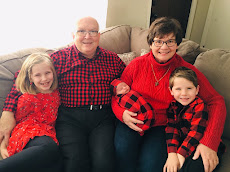My Renewed Appreciation for the Privilege of Voting
My first exposure to the reality of elections in the
U.S.A. was in the early 1960s when, on election day, I accompanied my parents
to the Sterling Township Hall in Blue Earth County, MN. Sterling Township is one of 23 townships in
Blue Earth County, with the county seat located in Mankato, MN.
In those years my father was one of the “supervisors”
of the township—sitting on the township governing board for a number of years. The supervisors along with the township
clerk also staffed the elections that were held periodically in the old town
hall. As I recall, the seriousness of Election
Day was underscored by the presence of the township constable—along with all
members of the township board. The
constable, as I recall, wore a shiny metal badge and carried a pistol--though I
wondered whether, like television’s Deputy Barney Fife on the old Andy
Griffith Show (1960-65), he was allowed to have only one bullet which had
to be kept in his shirt pocket most of the time😊
Elections in those years were rather simple and basic,
involving only paper ballots, pencils and a lock-box that was used to collect
completed ballots in order to transport them to the County Auditor’s office in
the Blue Earth County Courthouse in Mankato, MN-- about 25 miles north of
Sterling Township.
This past Tuesday I served as an election judge for
the city of Moorhead, MN, and it dawned on me that I was serving in a capacity
similar to what my father did, in Sterling Township, some 60 years ago. This
experience gave me a chance to discover “up close and personal,” the inner workings of the election process in
2022. I volunteered for this service
in order to do my part in assuring our local election was run in accordance
with Minnesota law—with honesty, integrity and trustworthiness.
For quite a number of reasons, serving as an election
judge only increased my appreciation for and trust in the integrity of our
elections in the great state of Minnesota.
For example:
- · Election
officials are required to take training, based on the 74-page 2022 State of
Minnesota Election Judge Guide. This
detailed guide is highly informative and clearly reflective of pertinent
Minnesota State law. My training
included reading of the entire Guide, attending a 2-hour education session last
summer, and being instructed on-site
regarding my specific duties. It was
also helpful to have a mix of experienced election judges serving alongside
“newbies” like me. In addition to the
ten election judges responsible for the voters in Ward 1, Precinct 2 of
Moorhead---we had two “head judges” on our team who were readily available to
help out with questions and trouble-shooting during Election Day.
- ·
All judges were required to take the
following oath before the start of Election Day: “I, (name) solemnly
swear that I will perform the duties of election judge according to law and the
best of my ability and will diligently endeavor to prevent fraud, deceit and
abuse in conducting this election. I
will perform my duties in a fair and impartial manner and not attempt to create
an advantage for my party or for any candidate.”
- · The
facility where we were located—The Church of Saint Francis de Sales in north
Moorhead—was ideal for our purposes, with ample parking, accessible restrooms,
and sufficient space (all on one level) to accommodate a steady stream of
voters throughout the day.
- · The
election was conducted in a strictly bi-partisan and non-partisan manner. Bi-partisanship was assured because each
ward/precinct had election judges who were affiliated with each of the major political
parties. Non-partisanship was fostered
by an expectation that all judges agreed to refrain from wearing any political
clothing or buttons, and that they refrain from any political/partisan
conversation during Election Day.
- · I
was struck by how quickly and competently the head judges assisted election
judges with any questions (from voters) they didn’t know how to answer, as well
as how glitches with voting equipment were handled in a timely manner.
- · Along
the way I learned two other things about how elections in Minnesota are
conducted. First we don’t “spare the
horses” in terms of staffing of local polling places—I heard on MPR that
Minnesota hired about 30,000 local election staffers like myself. No doubt, this contributes to avoid long
lines on election day. Second, I also
learned that Minnesota has a single, uniform election procedure used in all 87
counties of the state. This stands in
contrast to other states, e.g. Arizona, where every county has its own election
procedures. No wonder that it takes
Arizona and other “don’t fence me in” states take days upon days to finish up
their election processes. Such delays
have, I fear, fostered a climate of impatience and uncertainty that has
contributed to the rise and spread of “election denialism” over the last few
years.
· My
impression, at the end of the day, was that it would be hard to imagine a
better way to conduct elections than the way we do in Minnesota. No wonder that the final results of the
election were accurate and available in a timely fashion that could be shared
with all Minnesotans via the various news media in our state.
At the end of election day 2022 I was nearly
exhausted, but also so very grateful that I played a small role in that most
basic activity of citizens in America:
voting in a fair and free election, thus expressing the sovereign will
of “we, the people.”


